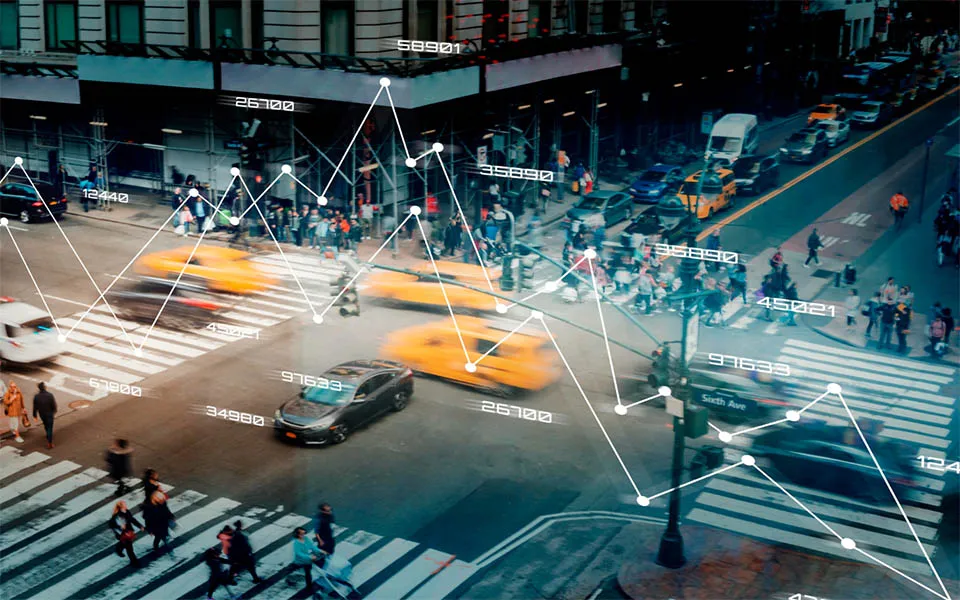Video Surveillance-as-a-Service - The Power of 5G and AI in Next-Generation Systems
With the global rollout of 5G networks commencing in 2019, the telecommunications landscape has seen a transformative shift, not only in consumer services but significantly in industrial applications as well. Among these applications, one of the most impactful has been in the realm of public safety, specifically through the enhancement of CCTV systems with 5G and artificial intelligence (AI) technologies. This integration is ushering in a new era for Video Surveillance-as-a-Service (VSaaS), leveraging the substantial capabilities of 5G to improve security and operational efficiency across various sectors.

Evolution of Video Surveillance Systems
Traditionally, video surveillance systems have been predominantly passive, utilized mainly for after-the-fact investigation following security breaches. The shift from analog to IP-based network cameras was a significant first step in transforming this field, providing better connectivity and higher-resolution video. However, this transition also introduced challenges, particularly with the enormous increase in data traffic and the need for advanced network infrastructure capable of managing such volumes.
The limitations of fiber-optic and 4G LTE networks in handling high-resolution, real-time video feeds are well-documented. Fiber, while high in bandwidth, involves substantial capital investment and struggles with geographical coverage. On the other hand, 4G networks, despite their broader availability, face issues of congestion as more devices connect and as the demand for higher video quality increases.
The Advent of 5G in CCTV Surveillance
5G technology promises to overcome these challenges by offering higher bandwidth, lower latency, and more reliable connections. These improvements make 5G ideal for supporting advanced video surveillance applications that require real-time data transmission without loss of quality, even in remote locations.
The integration of AI with 5G-enabled CCTV cameras transforms these systems from passive monitoring tools into proactive security measures. AI algorithms enhance video analytics by enabling real-time processing and interpretation of video data. This capability allows for immediate identification and response to potential security threats before they escalate, shifting the paradigm from simple surveillance to comprehensive security management.
Key Advantages of 5G-AI Integrated CCTV Systems
- Enhanced Reliability and Scalability: The low latency and high data throughput of 5G ensure that video feeds are streamed in real-time with minimal delay, making the system reliable for critical security applications. Additionally, 5G’s support for massive machine-type communications enables the connection of a larger array of cameras over extensive areas, improving scalability.
- Higher Resolution Video Capabilities: 5G supports ultra-HD (4K/8K) video transmissions that are essential for the clarity needed in security footage, helping in identifying details that were previously not discernible with lower resolution technologies.
- Advanced Video Analytics: AI-driven video analytics in 5G CCTV systems can detect and analyze motion, recognize faces, track objects, and monitor behavioral patterns. This level of analysis is crucial for settings where security and operational efficiency are paramount, such as airports, retail environments, and urban centers.
- Remote Accessibility: With 5G, video surveillance can be managed and accessed remotely, facilitating VSaaS. This model allows for the centralization of video feeds in cloud-based systems, where AI algorithms analyze the data, enabling users to access insights and footage on demand.
Multi-Access Edge Computing (MEC) and VSaaS
The integration of Multi-Access Edge Computing (MEC) with 5G CCTV systems addresses the concerns of data security and privacy by processing video data locally at the edge of the network. This approach not only secures sensitive data but also optimizes bandwidth usage and reduces latency further, enhancing the responsiveness of surveillance systems.
Industry-Specific Applications
- Transportation: AI-enhanced 5G CCTV can improve traffic management through real-time traffic condition monitoring and incident detection, enhancing road safety and efficiency.
- Healthcare: In healthcare, these systems support remote patient monitoring and surgical assistance, providing inputs that help in critical care without delays.
- Manufacturing and Construction: In industrial settings, AI-driven surveillance can ensure compliance with safety protocols, detecting deviations in real time and preventing accidents.
Opportunities for Telecom Operators
As 5G networks proliferate, telecom operators have a unique opportunity to expand their offerings beyond consumer services into specialized industrial applications like VSaaS. By providing dedicated 5G services for enterprises, including enhanced video surveillance, telecom operators can open new revenue streams while playing a crucial role in the digital transformation of public safety and security.
Conclusion
The convergence of 5G and AI technologies is revolutionizing the field of video surveillance, turning it into a dynamic, proactive tool for public safety and operational efficiency. As this technology evolves and becomes more integrated into our daily lives, the potential applications are vast, promising not only enhanced security but also significant improvements in how businesses and governments operate. This progress represents a significant step forward in our ability to manage and secure environments, making smarter, safer cities and facilities a tangible reality.








